
Youth worldwide are in danger due to small arms and conventional weapons. How do we, as youth, participate in the global debate on gun control?
- Subject:
- Arts and Humanities
- Social Science
- Material Type:
- Lesson Plan
- Date Added:
- 04/04/2014

Youth worldwide are in danger due to small arms and conventional weapons. How do we, as youth, participate in the global debate on gun control?
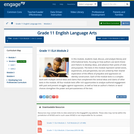
In this module, students read, discuss, and analyze literary and informational texts, focusing on how authors use word choice and rhetoric to develop ideas, and advance their points of view and purposes. The texts in this module represent varied voices, experiences, and perspectives, but are united by their shared exploration of the effects of prejudice and oppression on identity construction. Each of the module texts is a complex work with multiple central ideas and claims that complement the central ideas and claims of other texts in the module. All four module texts offer rich opportunities to analyze authorial engagement with past and present struggles against oppression, as well as how an author’s rhetoric or word choices strengthen the power and persuasiveness of the text.
Find the rest of the EngageNY ELA resources at https://archive.org/details/engageny-ela-archive .
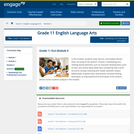
In this module, students read, discuss, and analyze literary texts, focusing on the authors’ choices in developing and relating textual elements such as character development, point of view, and central ideas while also considering how a text’s structure conveys meaning and creates aesthetic impact. Additionally, students learn and practice narrative writing techniques as they examine the techniques of the authors whose stories students analyze in the module.|
Find the rest of the EngageNY ELA resources at https://archive.org/details/engageny-ela-archive .
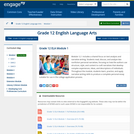
Module 12.1 includes a shared focus on text analysis and narrative writing. Students read, discuss, and analyze two nonfiction personal narratives, focusing on how the authors use structure, style, and content to craft narratives that develop complex experiences, ideas, and descriptions of individuals. Throughout the module, students learn, practice, and apply narrative writing skills to produce a complete personal essay suitable for use in the college application process.
Find the rest of the EngageNY ELA resources at https://archive.org/details/engageny-ela-archive .
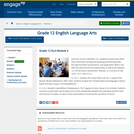
Over the course of Module 12.2, students practice and refine their informative writing and speaking and listening skills through formative assessments, and apply these skills in the Mid-Unit and End-of-Unit Assessments as well as the Module 12.2 Performance Assessment. Module 12.2 consists of two units: 12.2.1 and 12.2.2. In 12.2.1, students first read “Ideas Live On,” a speech that Benazir Bhutto delivered in 2007. Next, students analyze the complex ideas and language in Henry David Thoreau’s essay, “Civil Disobedience.”
Find the rest of the EngageNY ELA resources at https://archive.org/details/engageny-ela-archive .

In Module 12.3, students engage in an inquiry-based, iterative research process that serves as the basis of a culminating research-based argument paper. Building on work with evidence-based analysis in Modules 12.1 and 12.2, students use a seed text to surface and explore issues that lend themselves to multiple positions and perspectives. Module 12.3 fosters students’ independent learning by decreasing scaffolds in key research lessons as students gather and analyze research based on vetted sources to establish a position of their own. Students first generate a written evidence-based perspective, which serves as the early foundation of what will ultimately become their research-based argument paper.
Find the rest of the EngageNY ELA resources at https://archive.org/details/engageny-ela-archive .
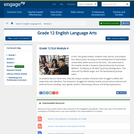
In this 12th grade module, students read, discuss, and analyze four literary texts, focusing on the development of interrelated central ideas within and across the texts. |The mains texts in this module include|A Streetcar Named Desire|by Tennessee Williams, “A Daily Joy to Be Alive” by Jimmy Santiago Baca, “The Overcoat” by Nikolai Gogol, and|The Namesake|by Jhumpa Lahiri. As students discuss these texts, they will analyze complex characters who struggle to define and shape their own identities. The characters’ struggles for identity revolve around various internal and external forces including: class, gender, politics, intersecting cultures, and family expectations.|
Find the rest of the EngageNY ELA resources at https://archive.org/details/engageny-ela-archive .
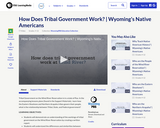
Tribal Government on the Wind River Reservation is in a state of flux. In the accompanying lessons plans (found in the Support Materials), learn how the Eastern Shoshone and Northern Arapaho tribes govern their people, what is the relationship between Tribal, State, and Federal government?
LEARNING OBJECTIVES:
Students will demonstrate an understanding of the workings of tribal government on the Wind River Reservation by creating a written report.
Students will understand the differences and similarities between state, tribal and federal governments and their functions, structures, and powers.
![Lenses of Vietnam: Protest in a Democracy [Inquiry Design Model (IDM) Unit Plan]](https://img.oercommons.org/160x134/oercommons/media/courseware/lesson/image/22Photograph_of_a_Female_Demonstrator_Offering_a_Flower_to_a_Military_Police_Officer22_by_Albert_R._Simpson_uOQkEc8.gif)
This inquiry takes students through an analysis and evaluation of the Compelling Question “Is protest important in a democracy?” using the Vietnam War as a lens to approach the topic. To accomplish this, students will become more media literate through evaluating sources, biases, perspectives, and the goals of creating media. Throughout the inquiry, students will engage in activities designed to promote and develop media literacy while analzying the Compelling Question and learning about the historical protests of the Vietnam Era.This inquiry is expected to take two weeks (10 periods) to complete: one 45-minute class period to stage the question, introduce the inquiry, and to review media literacy; two 45-minute class periods for each of the three supporting questions; and then three 45-minute class periods for students to write and research their argumentative thesis. If students are as of yet less familiar with media literacy, the instructor should add at least another class period, or more, introducing them more fully to this.The full unit, along with all materials and resources, is available as a PDF attachment.
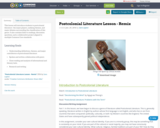
This lesson will introduce students to postcolonial literature--the major players, unifying themes, and major debates surrounding the classification of this genre. It also contains links to readings, discussion questions, and a collaborative project aligned to multiple Common Core standards.
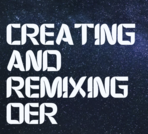
This lesson supports faculty in Rural Arizona IHE in exploring the different ways to engage with OER and contribute to the Open Education community. Faculty will:practice using the OER Commons Authoring Tool and Remix Toolreflect on their understanding of OER creation and OER remixing The cover image of this lesson was created by Joanna Schimizzi in Canva and is licensed CC-BY. The image has a black background with galaxy-type stars and says "Creating and Remixing OER" in white capital letters.
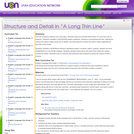
This set of lessons extends over a few days. Students read and annotate Ernie Pyle's "A Long Thin Line of Anguish." Students complete a SAYS/DOES graphic organizer, working on summarizing the text, noticing the choices the author makes about use of details, and describing the choices the author makes regarding the structure of the article.
Students complete a SOAPStone handout, identifying subject, occasion, author, purpose, speaker and tone (SOAPStone is a pre-AP/AP strategy). Students develop claims about why Ernie Pyle makes the writing choices he makes. Students write an informal, free-response style assessment about the impact of Pyle's choices.
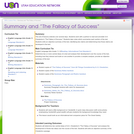
This set of lessons extends over several days. Students work with a partner to read and annotate G.K. Chesterton's "The Fallacy of Success." Students take notes which summarize each section of the text. Students write an objective summary of the text, identifying two claims and determining how those claims are developed in the text.